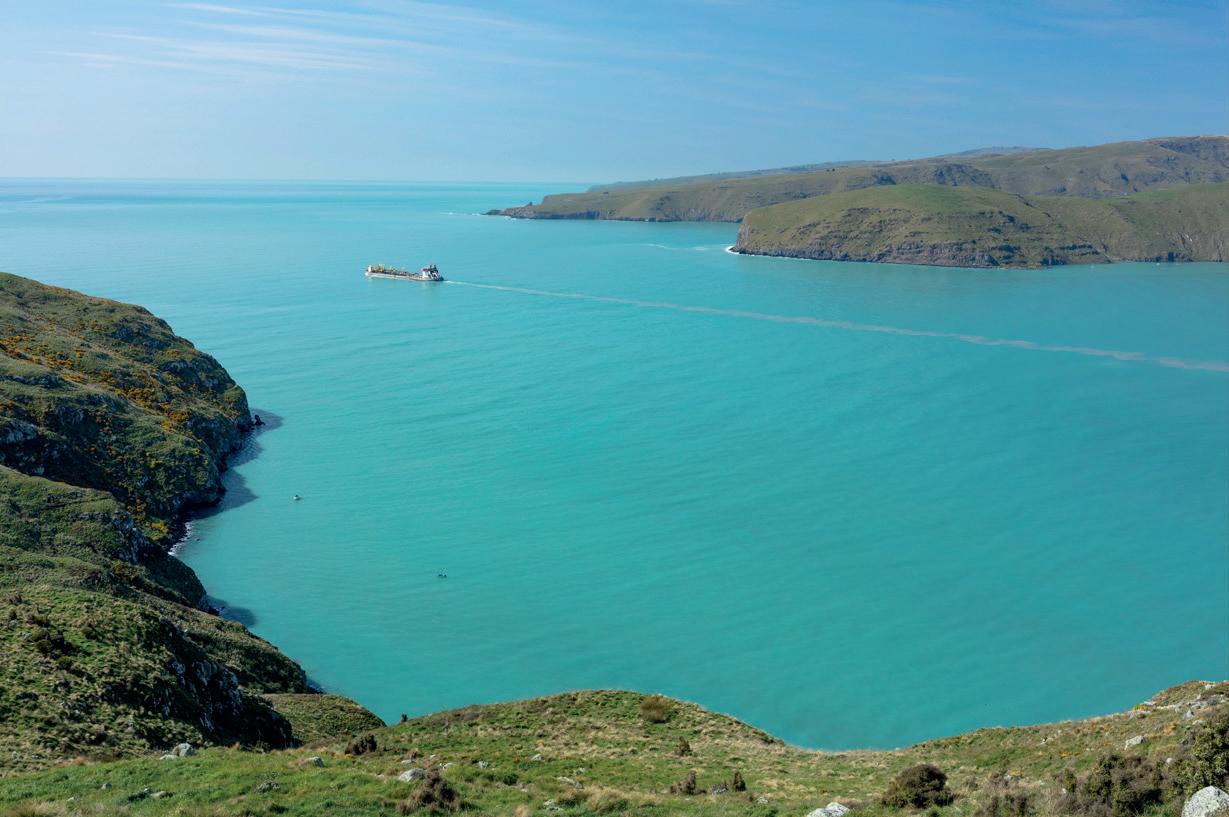
3 minute read
Australasia Focus
LYTTELTON AIMS FOR ECOSYSTEMS REBUILD
New Zealand’s Lyttelton Port Company (LPC) has developed an industry-leading approach to biodiversity in its harbour, committing to minimising impact and rebuilding ecosystems, finds Dave MacIntyre
Lyttelton Harbour/Whakaraupō is bordered by different land uses, from agricultural and urban to industrial. Over time, these have impacted the biodiversity of the harbour, such as by clearing vegetation, urban expansion and port developments. The upper harbour is impacted by sediment accumulation because of hillside erosion.
LPC’s Biodiversity Positive programme is part of its Sustainability Strategy and aims to ensure the company is factoring in the effects of port operations and development on nature.
The port has programmes for restoring terrestrial environment through nature forest regeneration on port land; covenanting important habitat for lizards; protecting penguin habitat; innovative marine mammal research; supporting environmental education for schools; land and sea biosecurity protection; and partnering through the Whaka Ora Healthy Harbour programme to restore ecological values with mana whenua (people of the land).
Local iwi (Māori tribe) Te Rūnanga o Ngāi Tahu and local government bodies are also involved.
Biodiversity challenge
Lyttelton is approaching the challenge of biodiversity loss from several angles. First is avoiding loss of biodiversity, second is reducing the pressures on nature caused by LPC’s operations, third is restoring and regenerating in a way that rebuilds ecosystems and populations and species, and is the focus on transforming LPC’s business model to address the drivers of nature loss.
An example of the port modifying its operations is in its dredging programmes. Significant water quality information was gathered as a baseline using 14 telemetered real-time water quality-monitoring instruments over a period of four years.
This helped guide a response to levels of turbidity if they were rising because of dredging. Because the data was real-time, the dredge could move until clarity improved.
Several introduced marine pests are present in the harbour which are associated with both commercial shipping and recreational boating. LPC is leading a response to reduce numbers of the Mediterranean fanworm (Sabella spallanzanii) with divers regularly removing Sabella to reduce the likelihood of further spread.
Wildlife protection
Lyttelton Harbour has zones which provide great habitat for protected seabirds. The white-flippered penguin is endemic to Canterbury and only breeds in Banks Peninsula and Motunau Island. Annually, the port surveys to discover the location of penguin nests, using a highly-trained penguin detection dog. This enables LPC to protect the penguins during construction projects and to create more-suitable habitat in other areas of the coastline.
A major predator control programme is also undertaken. In
8 The dredge
Albratros at work in Lyttelton Harbour
terms of innovative marine mammal research, LPC engaged leading scientists to develop the most comprehensive and longest continuously-running acoustic monitoring network ever operated in a New Zealand port environment.
This has created one of the most significant data sets of this type in the world. Over 150,000 hours of monitoring data has been collected across several instruments.
The data provides information on the levels of sound, the relative abundance of dolphins and gives insights into their behaviour prior to, during and after piling. This information allows LPC to better understand how dolphins react to the piling, and to alter methods if need be.
LPC is also furthering environmental education opportunities for harbour primary schools. The Port Saddle Ecological Restoration site is used to host schools for a day where children learn about predator control, native wildlife, invertebrates, restoration through tree planting, and weed control.
The Port Saddle Restoration Project is a 17-hectare site on the hillside above the port where LPC has partnered with the Banks Peninsula Conservation Trust in an ecological enhancement programme including removing weeds and revegetating with locally-sourced tree species to recreate habitat lost decades ago.









